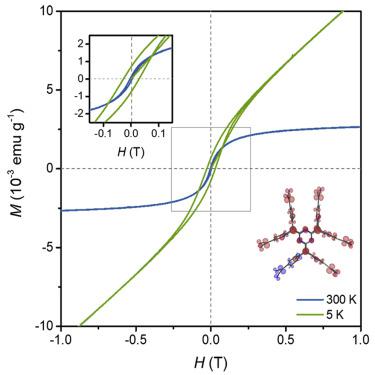Chem ( IF 19.1 ) Pub Date : 2018-08-02 , DOI: 10.1016/j.chempr.2018.07.006 Javeed Mahmood , Jungmin Park , Dongbin Shin , Hyun-Jung Choi , Jeong-Min Seo , Jung-Woo Yoo , Jong-Beom Baek

|
The unique organic π-conjugated network structure was synthesized in trifluoromethanesulfonic acid at 155°C by self-polymerization of the tetracyanoquinodimethane (TCNQ) monomer in an efficient way. Highly stable free radicals achieved through the self-polymerization of TCNQ, these radicals originate from the 90° rotation of cyclohexadiene rings into phenyl rings and 120° ferromagnetic order around the triazine rings. The presence of unpaired electrons (radicals) in p-TCNQ was established by solid-state electron spin resonance spectroscopy, and the long-range magnetic ordering through the network was characterized by a Quantum Design SQUID-VSM. Designing and manipulating the spins in polymer networks via organic methodologies will provide alternative approaches for versatile future applications of plastic magnets.
中文翻译:

有机铁磁性:陷阱自旋在有机网络结构的玻璃态
155°C下的三氟甲磺酸通过四氰基喹二甲烷(TCNQ)单体的自聚合有效合成了独特的有机π共轭网络结构。通过TCNQ的自聚合获得高度稳定的自由基,这些自由基源自环己二烯环旋转90°成苯环和围绕三嗪环的120°铁磁序。p中存在不成对的电子(自由基)-TCNQ是通过固态电子自旋共振光谱法建立的,并且通过量子设计SQUID-VSM表征了通过网络的远距离磁有序性。通过有机方法设计和操纵聚合物网络中的自旋,将为塑料磁体的未来广泛应用提供替代方法。











































 京公网安备 11010802027423号
京公网安备 11010802027423号